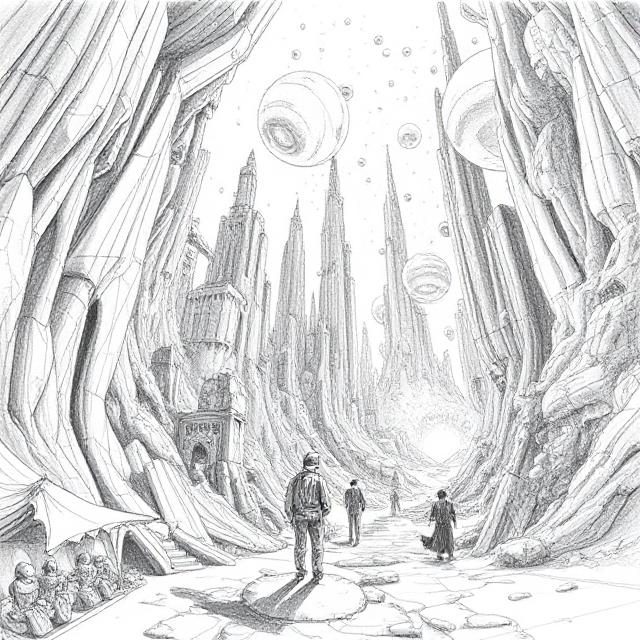The history of artificial intelligence (AI) reveals a fascinating trajectory from early theoretical concepts to the current era of rapid, exponential growth that has transformed science fiction predictions into near-term realities. For decades, AI development was slow and punctuated by setbacks, including two notable “AI winters” where funding and interest dried up due to unmet expectations. However, a confluence of key breakthroughs and technological advancements has recently accelerated AI progress to a pace that far outstrips human intuition about how quickly technology evolves.
### Early Foundations and Rule-Based AI (1950s–1970s)
AI’s conceptual foundation was laid in 1950 when Alan Turing proposed the Turing Test, a method to determine if a machine could exhibit human-like intelligence. In 1956, the Dartmouth Summer Research Project coined the term “artificial intelligence” and sparked initial enthusiasm. Early AI systems were rule-based, relying on explicit if-then logic. The perceptron, developed in 1957 by Frank Rosenblatt, introduced weighted inputs to improve output accuracy, mimicking basic learning mechanisms.
In 1966, the chatbot ELIZA demonstrated early natural language interaction by mimicking a psychotherapist, engaging users with follow-up questions based on their responses. Yet, despite these milestones, the limitations of computing power and overly optimistic expectations led to the first AI winter starting in the 1970s, as progress stalled and funding waned.
### Machine Learning and Neural Networks Resurgence (1980s–1990s)
The mid-1980s heralded a resurgence with the rise of machine learning, shifting AI from rigid rule-based systems to data-driven pattern recognition. In 1986, the introduction of the backpropagation algorithm by Hinton, Rumelhart, and Williams enabled neural networks to learn iteratively from their own errors, significantly enhancing AI’s learning capabilities. In 1989, the development of convolutional neural networks (CNNs) by Yann LeCun further advanced AI’s ability to interpret images, laying the groundwork for modern computer vision.
Despite these advances, a second AI winter occurred in the late 1980s and early 1990s due to skepticism and commercial failures. However, in 1997, IBM’s Deep Blue defeated world chess champion Garry Kasparov, reigniting interest by demonstrating AI’s potential in complex problem-solving.
### The GPU and Deep Learning Revolution (2000s–2010s)
A pivotal moment came with Nvidia’s release of the GeForce 256 in 1999, the first modern GPU capable of parallel processing. This hardware breakthrough became crucial for AI, enabling the efficient training of large neural networks. In 2007, Nvidia’s CUDA architecture allowed developers to harness GPUs for general-purpose computing, accelerating AI research dramatically.
The 2010s saw the dawn of the deep learning era, defined by multi-layer (deep) neural networks capable of processing complex data through multiple hidden layers. In 2011, IBM’s Watson won Jeopardy!, showcasing natural language understanding. The launch of Apple’s Siri also marked the arrival of AI voice assistants into everyday life.
Subsequent breakthroughs included Google Brain’s unsupervised learning (2012), DeepMind’s Atari game mastery (2013), the emergence of Generative Adversarial Networks (GANs) in 2014 for realistic image generation, and DeepMind’s AlphaGo defeating the world Go champion in 2016—an achievement once thought impossible for AI.
### Transformer Models and Large-Scale AI (2017–Present)
The publication of the Transformer architecture paper “Attention is All You Need” in 2017 revolutionized natural language processing. This architecture underpins OpenAI’s GPT series, beginning with GPT-1 in 2018, which demonstrated promising language generation. GPT-2 (2019) raised public awareness about AI’s growing capabilities, followed by GPT-3 (2020), which impressed with its sophisticated natural language understanding and generation.
OpenAI’s ChatGPT release in late 2022 marked a watershed moment as AI entered mainstream consciousness, becoming one of the fastest-growing products ever. Other milestones include DeepMind’s AlphaFold 2 solving protein folding (2020), and the proliferation of AI-generated images and videos through models like DALL·E, MidJourney, Stable Diffusion, and OpenAI’s Sora (2024).
Hardware advancements continue alongside software, with Nvidia’s Blackwell GPUs (2025) further boosting AI training efficiency. The release of open-source large language models like Meta’s LLaMA has democratized access, fueling even faster innovation.
### Exponential Growth and the Changing Landscape
AI computation has historically followed Moore’s Law, doubling approximately every 18-24 months until 2010. Since then, the pace has accelerated to doubling every 5-7 months or even faster, driven by deep learning and large-scale models. This exponential growth means that capabilities once expected in years are now realized in months, outpacing human ability to anticipate or fully grasp the implications.
Unlike previous AI winters caused largely by funding cuts and unmet expectations, the current widespread adoption of AI across industries and massive investments by major companies make another prolonged winter unlikely. AI is increasingly becoming self-advancing, with AI systems helping improve AI research itself, removing human bottlenecks and sustaining rapid progress.
John McCarthy’s famous observation that “as soon as it works, no one calls it AI anymore” illustrates how AI technologies quickly become integrated into everyday tools—voice assistants like Alexa and Siri were once cutting-edge AI but are now seen as commonplace. Today’s AI models have likely surpassed the intelligence benchmarks envisioned by early pioneers like Alan Turing.
This rapid evolution has quietly reshaped our world, transforming once distant science fiction visions into tangible reality, underscoring the profound impact of exponential growth in AI technology.


